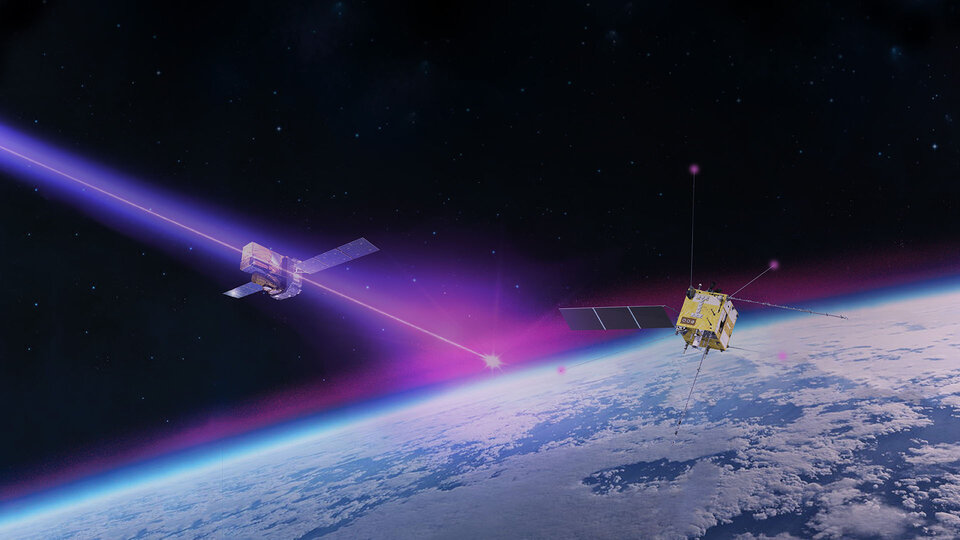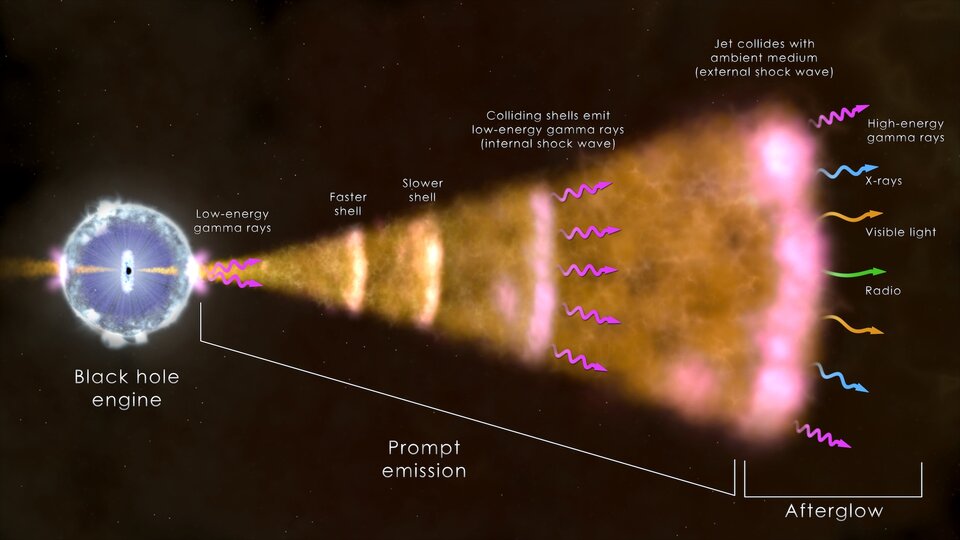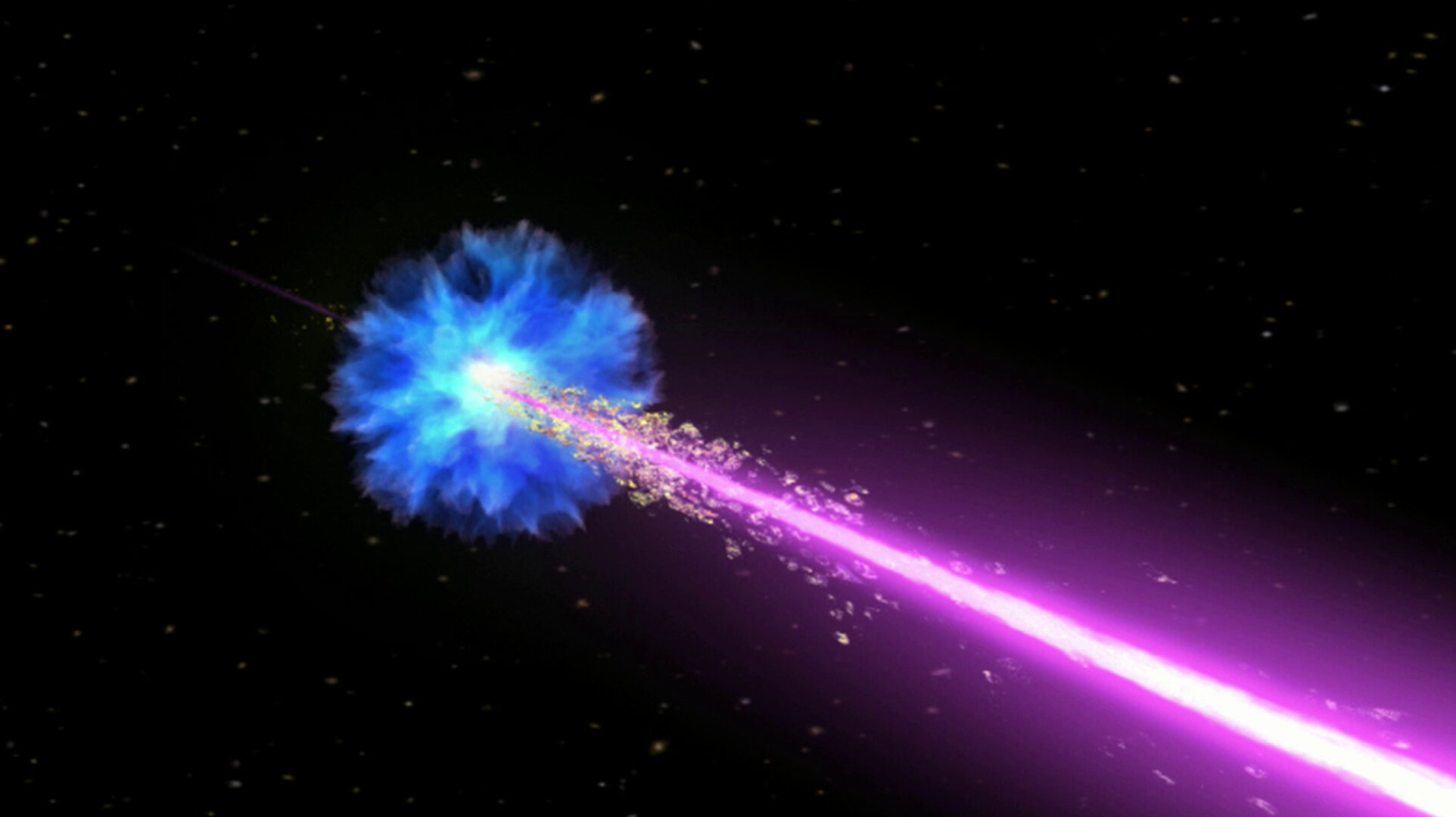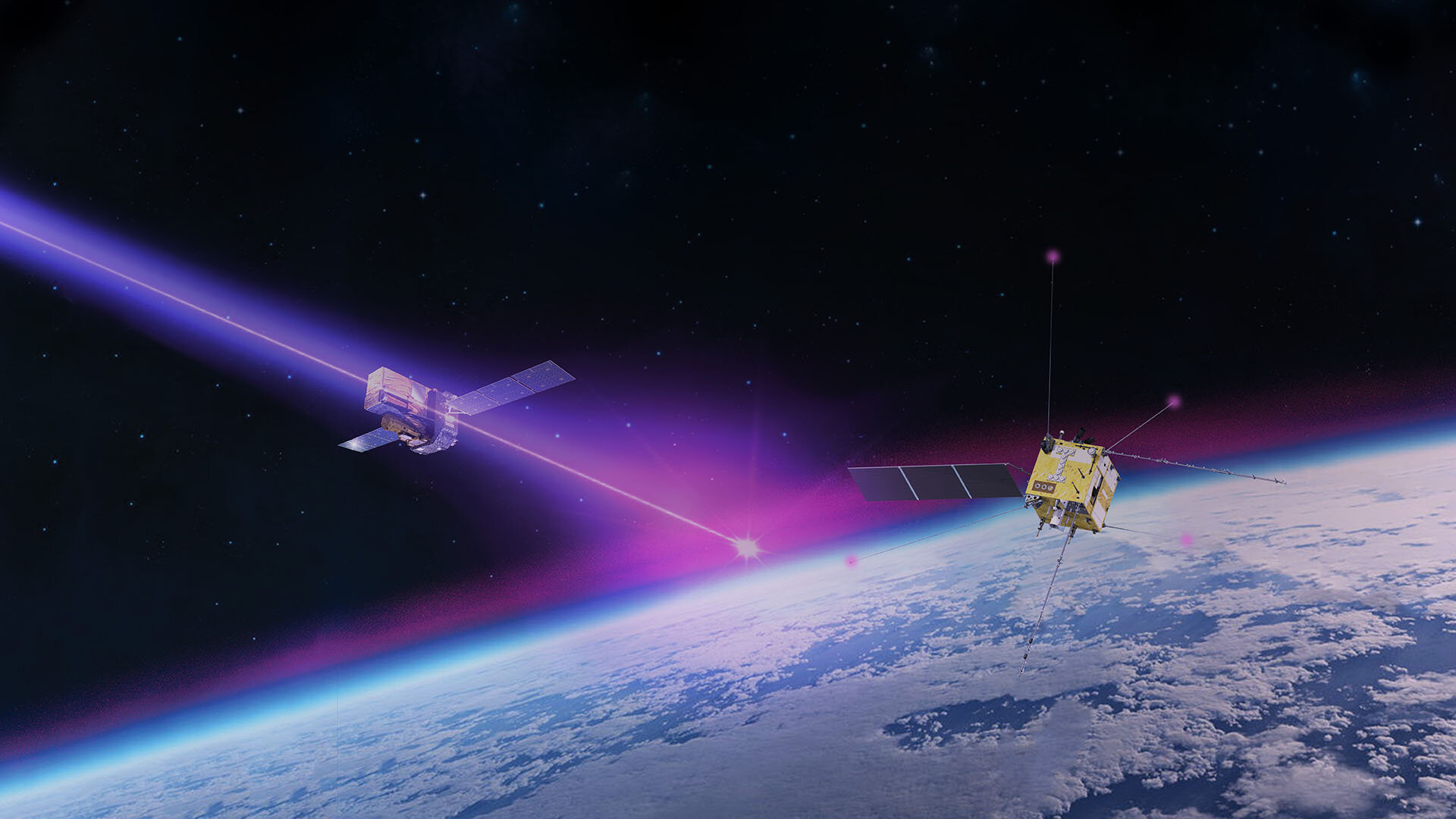Blast from the past: gamma-ray burst strikes Earth from distant exploding star
An enormous burst of gamma rays, detected by ESA’s Integral space telescope, has struck Earth. The blast caused a significant disturbance in our planet’s ionosphere. Such disturbances are usually associated with energetic particle events on the Sun but this one was the result of an exploding star almost two billion light-years away. Analysing the effects of the blast could provide information about the mass extinctions in Earth’s history.

At 14:21 BST / 15:21 CEST on 9 October 2022, an extremely bright and long-lasting gamma-ray burst (GRB) was detected by many of the high-energy satellites in orbit close to the Earth, including ESA’s Integral mission.
The International Gamma-Ray Astrophysics Laboratory (Integral) was launched by ESA in 2002 and has been detecting gamma-ray bursts almost every day since that time. However, GRB 221009A, as the blast was named, was anything but ordinary. “It was probably the brightest gamma-ray burst we have ever detected,” says Mirko Piersanti, University of L’Aquila, Italy, and lead author of the team publishing these results today.
Gamma-ray bursts were once mysterious events but are now recognised to be the outpouring of energy from exploding stars called supernovae, or from the collision of two super-dense neutron stars.
“We’ve been measuring gamma-ray bursts since the 1960s, and this is the strongest ever measured,” says co-author Pietro Ubertini, National Institute for Astrophysics, Rome, Italy, and the principal investigator for Intergral’s IBIS instrument. So strong in fact that its nearest rival on record is ten times weaker. Statistically, a GRB as strong as GRB 221009A arrives at Earth only once every 10 000 years.
During the 800 seconds that the gamma rays were impacting, the burst delivered enough energy to activate lightning detectors in India. Instruments in Germany picked up signs that Earth’s ionosphere was disturbed for several hours by the blast. This extreme amount of energy gave the team the idea to look for the burst’s effects on Earth’s ionosphere.
The ionosphere is the layer of Earth’s upper atmosphere that contains electrically charged gases called plasma. It stretches from around 50 km to 950 km in altitude. Researchers refer to it as the top-side ionosphere above 350 km, and the bottom-side ionosphere below that. The ionosphere is so tenuous that spacecraft can hold orbits in most of the ionosphere.
One of those spacecraft is the China Seismo-Electromagnetic Satellite (CSES), also known as Zhangheng, a Chinese-Italian space mission. It was launched in 2018 and monitors the top side of the ionosphere for changes in its electromagnetic behaviour. Its primary mission is to study possible links between changes in the ionosphere and the occurrence of seismic events such as earthquakes, but it can also study the impact of solar activity on the ionosphere.
Both Mirko and Pietro are part of the science team for CSES and they realised that if the GRB had created a disturbance, CSES should have seen it. But they could not be sure. “We had looked for this effect from other GRBs in the past but had seen nothing,” says Pietro.

In the past, GRBs have been spotted affecting the bottom-side ionosphere during the night, when the solar influence is removed, but never in the top side. This had led to the belief that by the time it reached Earth, the blast from a GRB was no longer powerful enough to produce a variation in the ionospheric conductivity leading to an electric field variation.
This time, however, when the scientists looked, their luck was different. The effect was obvious and strong. For the first time ever, they saw an intense perturbation in the form of a strong electric field variation in the top-side ionosphere. “It is amazing. We can see things that are happening in deep space but are also affecting Earth,” says Erik Kuulkers, ESA Project Scientist.
This particular GRB took place in a galaxy almost 2 billion light-years away – hence two billion years ago – yet it still had enough energy to affect Earth. While the Sun is typically the primary source of radiation robust enough to affect Earth's ionosphere, this GRB triggered instruments generally reserved for studying the immense explosions in the Sun's atmosphere known as solar flares. “Notably, this disturbance impacted the very lowest layers of Earth's ionosphere, situated just tens of kilometres above our planet's surface, leaving an imprint comparable to that of a major solar flare," says Laura Hayes, research fellow and solar physicist at ESA.
This imprint came in the form of an increase in ionisation in the bottom-side ionosphere. It was detected in very low frequency radio signals that bounce between the ground and Earths lower ionosphere. “Essentially, we can say that the ionosphere ‘moved’ down to lower altitudes, and we detected this in how the radio waves bounce along the ionosphere,” explains Laura, who published these results in 2022.
It reinforces the idea that a supernova in our own galaxy might have much more serious consequences. “There has been a great debate about the possible consequences of a gamma-ray burst in our own galaxy,” says Mirko.
In the worst case, the burst would not only affect the ionosphere, it could also damage the ozone layer, allowing dangerous ultraviolet radiation from the Sun to reach Earth’s surface. Such an effect has been speculated to be a possible cause of some of the mass extinction events known to have taken place on Earth in the past. But to investigate the idea, we will need a lot more data.
Now that they know exactly what to search for, the team has already started looking back into the data collected by CSES and correlating it with the other gamma-ray bursts seen by Integral. And while they can only go back to 2018, when CSES was launched, a follow-up mission has already been planned, ensuring that this fascinating new window into the way Earth interacts with even the very distant Universe will now remain open.


Access the video
Notes for editors
The paper “First Evidence of Earth’s top-side ionospheric electric field variation triggered by impulsive cosmic photons” is published in Nature Communications.
DOI 10.1038/s41467-023-42551-5
For more information, please contact:
ESA media relations
media@esa.int


